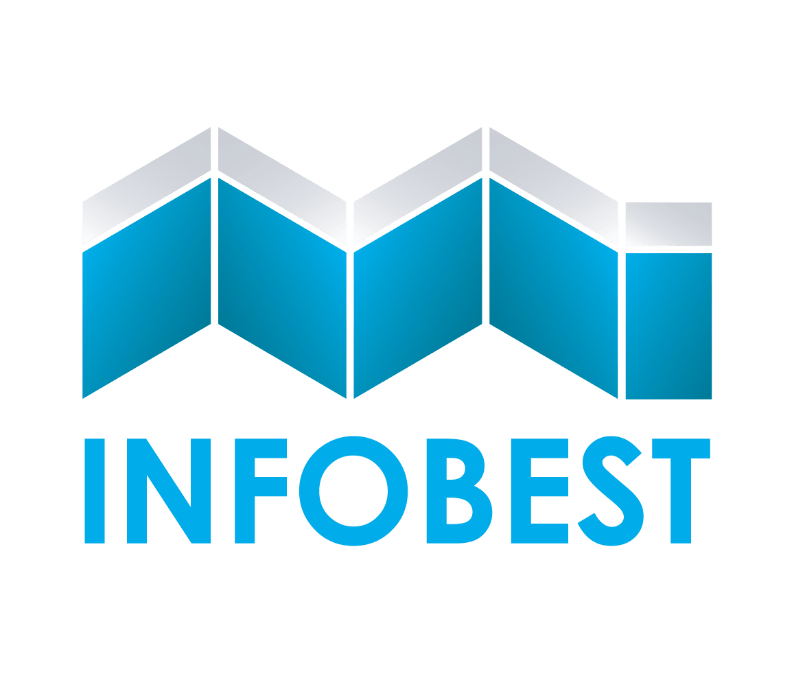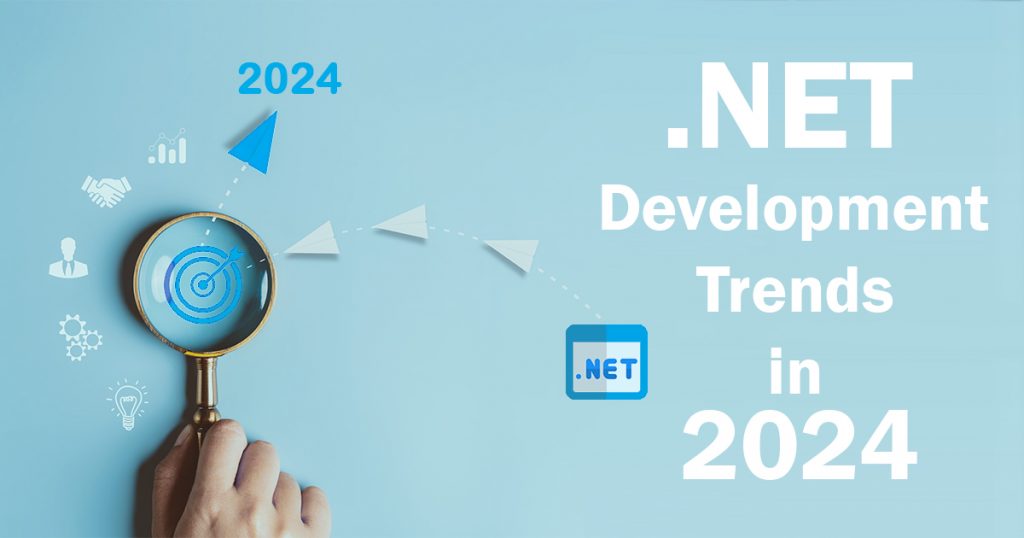Navigating the ever-evolving landscape of technology requires an acute awareness of emerging trends and breakthroughs. Nowhere is this more critical than in the dynamic field of software development, where staying ahead is synonymous with success. Amidst this ever-changing backdrop, one constant remains—the sustained popularity of Microsoft’s .NET framework. Renowned for its versatility and reliability, .NET stands tall as a top choice for developers, earning favor for a multitude of reasons.
Sustained by Microsoft’s unwavering commitment to innovation, the future of .NET unfolds with a wealth of possibilities. From the groundbreaking release of .NET Core to the platform unification ushered in by .NET 5 and subsequent versions, the trajectory is undeniably upward. As businesses and developers navigate this path of continual improvement, staying abreast of the latest trends in .NET development becomes paramount.
In 2024, the landscape of .NET development is poised to witness a myriad of trends, particularly in web and mobile app development. Techniques and frameworks such as .NET MAUI and WebAssembly are set to take center stage, promising transformative possibilities. This blog aims to delve into the latest .NET development trends for 2024, providing valuable insights to keep you at the forefront of innovation in this ever-evolving domain. Join us as we explore the trends shaping the future of .NET development and empower you to navigate the technology terrain with confidence.
Navigating Tomorrow: Key .NET Development Trends for 2024
1. Usage of .NET MAUI for Native Apps
In the race against time, organizations are turning to dotnet companies for swift solutions, and at the forefront of this efficiency drive is .NET MAUI by Microsoft. This groundbreaking technology facilitates native application development through a singular C# codebase.
.NET MAUI’s latest features transcend platform boundaries, enabling developers to create applications for Android or iOS effortlessly. Its capabilities extend beyond mere development, allowing the integration of sensing, network connection, and data access through custom APIs within a unified solution.
The framework’s unique strength lies in its capacity to reuse UI components across platforms, delivering significant time savings while ensuring a consistent user experience. As we step into 2024, .NET MAUI becomes an even more powerful ally, offering organizations the ability to save time and meet project deadlines seamlessly.
Amidst the constant demand for efficiency, .NET MAUI emerges as a transformative solution, streamlining development processes and delivering projects ahead of defined timelines.
2. Unlocking IoT Potential with .NET in 2024
The Internet of Things (IoT) has evolved into a transformative force, encompassing any device connected to the internet. Its popularity stems from its ability to empower businesses with real-time data collection, shaping responsive strategies for growth. As we step into 2024, IoT takes on a crucial role in company strategies, with the .NET framework emerging as a key player in IoT application development.
The .NET framework, renowned for its versatility, becomes a cornerstone for IoT application development in 2024. Its capacity to seamlessly handle multiple languages like C# or VBScript provides developers with unparalleled access to all .NET APIs (Application Programming Interfaces). This flexibility is especially crucial for developers seeking compatibility across various platforms, from Windows 10 IoT Core to Windows Server 2016 Core Essentials edition.
Access Across Platforms
Developers gain access to Visual Studio Code and Microsoft Azure Mobile Services SDKs, supporting mobile app development on iOS and Android devices. This streamlined accessibility enhances the efficiency of IoT application development, fostering a dynamic environment for innovation.
.NET’s compatibility extends to popular boards such as Raspberry Pi, Arduino, Pine A64, and more. This compatibility ensures a seamless integration of the framework’s internal architecture with a variety of devices. The framework introduces a novel .NET trend designed to propel applications powered by machine learning, leveraging the latest advancements in deep learning and artificial intelligence technology from Microsoft Research.
In essence, the significance lies in the ability of .NET to enable IoT applications that present the current state of both hardware and software through a unified interface. This not only streamlines development across diverse devices but also positions .NET as a driving force behind the integration of machine learning capabilities in IoT applications.
3. Unleashing the Potential of Xamarin in .NET Development
Within the dynamic landscape of .NET development, Xamarin emerges as a unique technology stack, enabling the seamless construction of applications across mobile, desktop, and web platforms.
Xamarin’s Versatility Across Platforms
A standout feature of Xamarin lies in its ability to facilitate the development of a wide array of applications, covering mobile, desktop, and web-based solutions.
Cost-Effective Shareable Codebase
Xamarin proves invaluable by leveraging the creation of a shareable codebase, ensuring a cost-effective approach that saves both time and resources. This approach is particularly attractive for businesses seeking efficiency across various operating systems.
Integrated Support from Microsoft
The integration of Xamarin with .NET brings forth a unified development experience. Microsoft’s support further enhances the ecosystem, ensuring software remains up-to-date with the latest framework enhancements and security patches.
Built-in .NET Framework
With Xamarin seamlessly integrated into the .NET framework, there is no need for additional tools. This built-in functionality streamlines the development process for Android and iOS applications.
4. Machine Learning Integration in .NET
In the dynamic landscape of technology, the intersection of machine learning and .NET takes a prominent role, ushering in a future where applications possess the ability to learn and adapt autonomously. The year 2024 witnesses a pivotal trend as machine learning seamlessly integrates into the fabric of the .NET framework, propelled by the accessibility and robust capabilities of Microsoft’s ML.NET. This convergence signifies a transformative shift, redefining how applications navigate data and respond to evolving challenges. Microsoft’s open-source machine learning framework, ML.NET, acts as a guiding force, empowering .NET developers to effortlessly incorporate intelligent learning mechanisms, charting a course for a future where technology mirrors the adaptive nature of human intelligence in the digital realm.
The Dynamics of ML.NET
At the heart of this transformative trend is ML.NET, Microsoft’s versatile machine learning framework designed for effortless integration with .NET applications. This synergy enables developers to instill intelligent learning mechanisms into their creations, unlocking a realm of possibilities for adaptive, data-driven solutions.
Machine learning’s integration into .NET signifies more than a trend; it’s a paradigm shift. Applications equipped with machine learning capabilities don’t merely process data; they autonomously learn, adapt, and respond, setting the stage for a future where technology mirrors human-like intelligence in the digital realm.
5. Fortifying Security in .NET Development
In software development, security stands as a paramount concern, and .NET emerges as a robust guardian. As we step into 2024, .NET reaffirms its commitment to fortifying applications through robust security enhancements. Offering a comprehensive toolkit, .NET empowers developers with a suite of formidable security features, ranging from cryptography hashes to built-in identity management and threat detection. This intricate defense mechanism, complemented by a sophisticated patching system, not only deters potential threats but solidifies them. NET’s standing as a secure and reliable framework for development. The emphasis on authentication, authorization, input validation, HTTPS configuration, structured exception handling, and protection against remote code execution positions .NET as a dominating force, ensuring applications adhere to the highest security standards.
In conclusion, the unfolding trends in .NET development for 2024 promise a transformative shift in the landscape of software development. From the robust security fortifications embedded within the framework to the ascendancy of .NET MAUI and the seamless integration of machine learning and AI, developers, and businesses stand on the brink of an exciting technological frontier. Embracing these trends is not merely an option but a strategic imperative for those aspiring to navigate and lead in the ever-evolving realm of .NET development. Staying abreast of these innovations, adapting swiftly, and harnessing the power of emerging technologies will be instrumental in maintaining a competitive edge in the dynamic and fast-paced world of software development. The future of .NET beckons, and those prepared to embrace it will undoubtedly shape the narrative of progress and innovation in the years to come.

